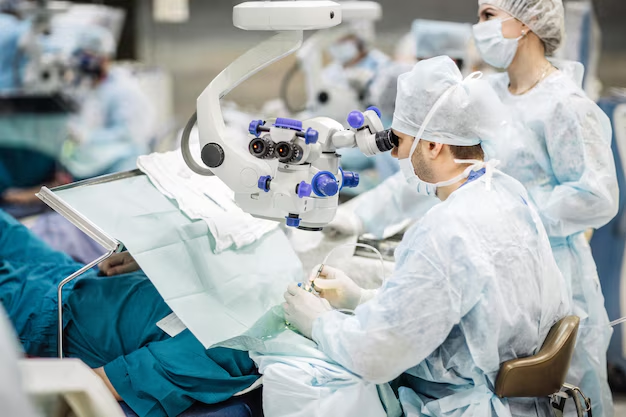Understanding Cataract Treatment: Your Comprehensive Guide
In today's world, cataracts are increasingly common, particularly as people age. The clouding of the eye's natural lens can gradually blur vision, making everyday tasks challenging. With millions affected globally, understanding the treatment options for cataracts can empower you to make informed decisions about your eye health. But what exactly does treatment entail, and what should one expect during the process? Let’s dive into the world of cataract treatment to uncover what options are available and how they can enhance your quality of life.
What Are Cataracts?
Cataracts develop when proteins in the lens of the eye form clumps, creating a cloudy area that impacts vision. Cataracts are often linked to aging, but certain risk factors such as diabetes, smoking, excessive alcohol use, and prolonged exposure to sunlight can accelerate their formation. Despite being a common occurrence, cataracts can significantly interfere with daily life, impacting your ability to read, drive, or even recognize faces.
Symptoms to Watch For
Cataracts often develop slowly and can go unnoticed until they begin to obscure vision significantly. Some common symptoms include:
- Blurry or dim vision
- Difficulty seeing at night
- Increased sensitivity to glare
- Seeing halos around lights
- Frequent changes in eyeglass prescriptions
- Faded or yellowing colors
Recognizing these signs early can be crucial in seeking timely treatment and minimizing potential complications.
Initial Steps in Cataract Treatment
Before contemplating surgery, an eye examination by a qualified professional is essential. This initial evaluation determines the extent of the cataracts and how they impact vision. Eye exams typically include:
- Visual acuity test: To measure how well you see at various distances.
- Slit-lamp examination: Provides a magnified view of the eye's structures.
- Retinal exam: An opportunity to examine the back of the eye.
- Tonometry: Measures intraocular pressure.
Non-Surgical Approaches
Early cataract stages might not necessitate surgery immediately. Some effective non-surgical solutions include:
- Prescriptive eyewear: Often, a new prescription for glasses or contact lenses can temporarily improve vision.
- Improved lighting: Adding more lights around the home, especially for reading and close-up work.
- Magnifying lenses: These can aid in tasks like reading small print.
- Anti-glare sunglasses: To manage sensitivity to light and glare.
These measures can help maintain functional vision as cataracts progressively develop.
When Is Surgery Necessary?
When cataracts interfere with your daily life, and vision correction aids no longer suffice, cataract surgery may be considered. Restoring vision is often the primary goal, but modern surgery can also address refractive errors, potentially reducing dependence on glasses or contacts.
Understanding Cataract Surgery
Cataract surgery is a common, safe, and effective procedure. During surgery, the clouded lens is removed and replaced with a clear artificial lens called an intraocular lens (IOL).
Types of Intraocular Lenses
The choice of IOLs depends on your specific vision needs:
- Monofocal IOLs: Provide clear vision at one distance, typically set for distance vision.
- Multifocal IOLs: Designed to correct vision at multiple distances, reducing the need for glasses.
- Toric IOLs: Particularly beneficial for people with astigmatism, offering better astigmatism correction.
The Surgical Procedure
Cataract surgery is typically an outpatient procedure, characterized by:
- Pre-operative preparation: Application of anesthetic eye drops and preparation of the eye.
- Lens removal: Ultrasonic energy breaks the cloudy lens into fragments that are gently suctioned out.
- IOL implantation: The chosen IOL is inserted in place of the natural lens.
- Recovery: Most patients notice improved vision within days, with full recovery in about a few weeks.
The procedure generally lasts around 15-30 minutes, followed by a short stay in recovery.
Post-Surgery Care and Recovery
Successful recovery depends on proper post-operative care. Here's what you can expect and do post-surgery:
- Avoid rubbing your eye: Help prevent irritation and potential infection.
- Use prescribed eye drops: They help in healing and prevent infection.
- Wearing an eye shield: Particularly useful during sleep or when outdoors, this protects against inadvertent touches or bumps.
- Limit strenuous activities: Avoid heavy lifting or bending for a few weeks.
Return for follow-up consultations to ensure the eye is healing properly and the IOL is perfectly positioned.
Potential Risks and Complications
While cataract surgery is generally safe, potential risks, though rare, include:
- Infection
- Inflammation
- Retinal detachment
- IOL dislocation
Prompt medical attention for any unusual symptoms post-surgery minimizes risks.
Advances in Cataract Treatment
The field of cataract treatment is constantly evolving, with technological advancements enhancing both outcomes and patient experience. Some notable innovations include:
- Femtosecond laser-assisted surgery: Offers increased precision and potentially shorter recovery times.
- Adjustable focus IOLs: Newer lenses that can be tuned post-surgery for optimal focus.
- Enhanced biocompatibility: Advances in IOL materials ensure better on-eye compatibility and increased longevity.
These technologies continue to improve upon traditional methods, offering more personalized vision enhancement options.
Practical Tips for Managing Cataracts
Empowering yourself with knowledge is the first step towards effectively managing cataracts. Here are some actionable tips:
🔍 Regular Eye Checkups: Consistent eye exams can detect cataracts early, allowing for timely intervention. ☀️ Protect Against UV Rays: Sunglasses with UV protection can slow cataract progression. 🥦 Healthy Lifestyle Choices: A balanced diet and quitting smoking can contribute to better eye health. 📝 Endorse Flexibility: Being open to adjusting lifestyle and lighting can aid comfort levels when dealing with cataracts.
Final Thoughts
Cataracts, while seemingly daunting, are highly treatable with modern medical approaches. Deciding when and how to treat cataracts is a personal choice, best discussed with an eye care professional who understands your specific situation and needs. Remember, with the right treatment and care, you can maintain clear, healthy vision for years to come. Embrace the opportunities of cataract treatment as a stepping stone toward a future of vibrant sight.
